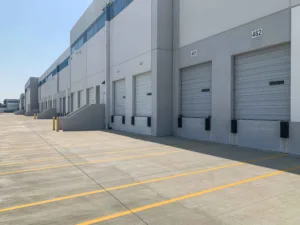Self storage investing has emerged as a popular and lucrative investment opportunity, attracting investors with a multitude of commercial real estate portfolios. But how did this once-niche industry become a mainstream investment choice? In this blog, we will explore the factors that contributed to the rise of self-storage investing and why it continues to gain popularity.
1. Changing Lifestyles and Consumer Behavior
The evolution of consumer behavior and lifestyle changes played a significant role in the growth of the self-storage industry. As people acquired more possessions and faced life transitions such as moving, downsizing, or renovating, the need for temporary storage solutions skyrocketed. Self-storage facilities provided a convenient and secure answer to this growing demand.
2. Urbanization and Smaller Living Spaces
Urbanization trends led to smaller living spaces, especially in densely populated cities. Many people found themselves in need of additional storage space for items they couldn’t accommodate in their apartments or homes. Self-storage facilities positioned in urban areas became a practical solution for urban dwellers.
3. Business and E-commerce Growth
The growth of e-commerce and small businesses also contributed to the popularity of self-storage investing. Online retailers and entrepreneurs required storage space for inventory, equipment, and supplies. Self-storage units offered a cost-effective alternative to traditional warehousing, making them an attractive choice for business owners.
4. Real Estate Investors Seek Diversification
Real estate investors sought diversification beyond traditional asset classes like residential and commercial properties. Self storage emerged as an attractive investment option due to its resilience during economic downturns, consistent cash flow, and relatively low operational costs. Investors recognized self-storage as a way to mitigate risk and add diversity to their portfolios.
5. Strong Historical Performance
Any investor keeps profitability in mind when adding to their portfolio. So how are self storage units profitable? Self-storage investments demonstrated strong historical performance. The industry exhibited consistent occupancy rates and rental income, even during economic recessions. This track record of stability attracted investors seeking reliable returns on their investments.
6. Favorable Financing and Capital
Access to financing and capital became more readily available for self-storage projects. Lenders recognized the industry’s stability and potential, making it easier for developers and investors to secure funding for new facilities and acquisitions. This access to capital fueled the industry’s growth.
7. Professional Management and Technology
The self-storage industry evolved with the adoption of professional management practices and technology. Property management companies specializing in self-storage improved operations, marketing, and customer service, enhancing the overall investor experience. Technology innovations, such as online rental platforms and security systems, further attracted investors by increasing efficiency and security.
8. Investor Education and Networking
Investor education and networking events played a crucial role in popularizing self-storage investing. Seminars, conferences, and online communities provided a platform for sharing knowledge and best practices. As more investors learned about the potential of self-storage, interest in the industry grew.
9. Continued Demand and Resilience
The self-storage industry’s resilience during the COVID-19 pandemic demonstrated its stability. While some sectors of the real estate market faced challenges, self-storage facilities remained in demand, underscoring their recession-resistant nature.
Conclusion
Self-storage investing has transitioned from a niche investment opportunity to a mainstream choice for investors seeking a reliable, income-producing asset. Factors such as changing consumer behavior, urbanization, business growth, diversification, strong historical performance, access to capital, professional management, technology, investor education, and ongoing demand have all contributed to the rise of self-storage as a popular investment opportunity. As the industry continues to evolve and adapt, it is likely to maintain its status as a compelling option for investors seeking stability and returns in their portfolios.





